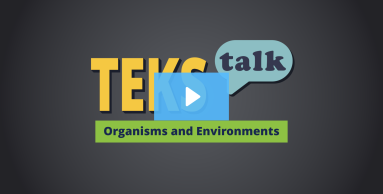
Knowledge and Skills Statement
Research
Rockow, Michael. “Tabizi Pythons & Clendro Hawks: Using Imaginary Animals to Achieve Real Knowledge About Ecosystems.” Science Scope 30, no. 5 (January 2007):16–22. http://www.jstor.org/stable/43181037.
Summary: In this activity, the teacher creates his own fictional animals and plants to teach students about ecosystems and food webs. Real food webs can, at times, be too simple or too complicated for some students. This made-up food web allows students to examine food webs without any prior knowledge of the animals and plants they are observing. This also allows the teacher to create animals that help teach specific concepts. Cards are printed with these animals on them along with cards listing different scenarios that might affect an ecosystem (droughts, floods, human activity). Students will separate these cards into groups based on whether they are herbivores, carnivores, or producers and create a food web of their own.
